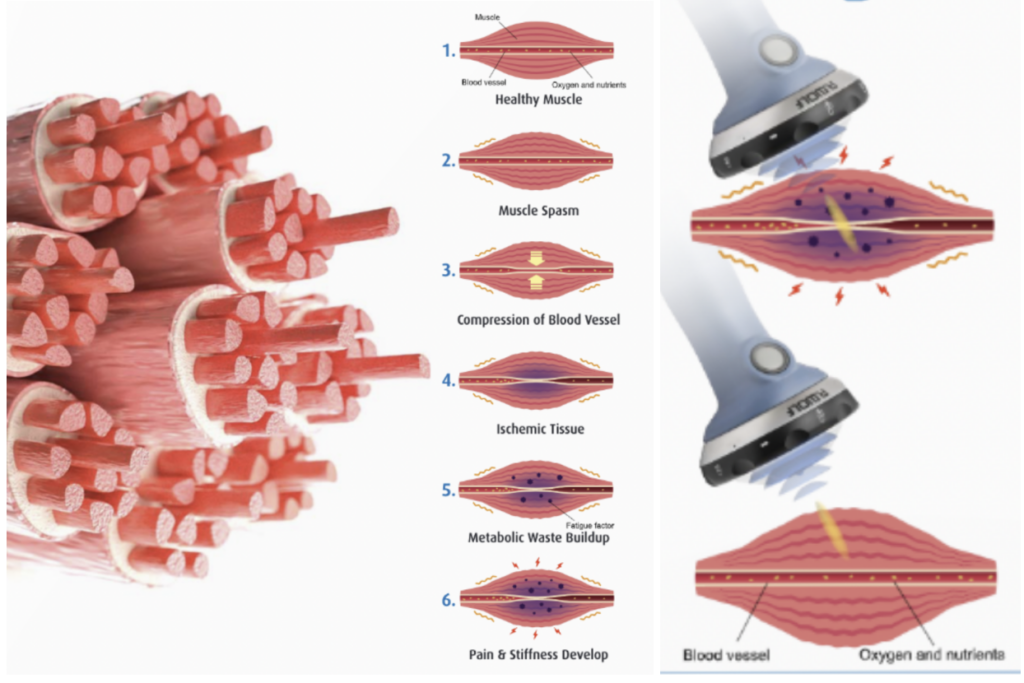How Shockwave Therapy Works
LI‑ESWT delivers focused acoustic waves to the corpus cavernosum, generating mechanical stress that:

- Stimulates angiogenesis. Shockwaves upregulate vascular endothelial growth factor (VEGF) and endothelial nitric oxide synthase (eNOS), promoting new blood vessel formation.
Impact-Site-Verification: 608b4acc-e42e-4097-9587-954f912e724e
- Mobilizes stem/progenitor cells. Mechanical microtrauma recruits circulating progenitor cells to repair and rejuvenate penile tissue.
- Improves nerve regeneration. Preclinical data suggest enhanced Schwann cell activity, supporting neural repair in diabetic or post‑prostatectomy ED PMC.
Clinical Evidence & Efficacy
- Meta‑Analyses: A 2024 systematic review of 19 studies (including randomized controlled trials and cohort studies) found LI‑ESWT significantly improved International Index of Erectile Function (IIEF) scores versus sham treatment, with pooled mean increases of 5–7 points on a 30‑point scale medRxiv.
- Randomized Trials: Six‑month follow‑ups in several RCTs demonstrate durability, with approximately 60–70% of responders maintaining improved erectile function without additional intervention PMC.
- Comparative Studies: In a head‑to‑head trial, LI‑ESWT achieved similar efficacy to on‑demand sildenafil in men with mild vasculogenic ED but without the need for daily medication PMC.
Typical Treatment Protocols
While protocols vary, most clinics follow a regimen of:
- Frequency: Two sessions per week.
- Duration: 3–6 weeks (6–12 total sessions).
- Energy Density: 0.09 mJ/mm² at 3 Hz, delivering 1,500–3,000 shocks per session.
- Treatment Sites: Penile shaft (two dorsal and two lateral sites) and crus near the perineum WJMH World Journal of Men’s Health.
Some centers now combine LI‑ESWT with adjunctive therapies—such as daily L‑arginine supplementation or platelet‑rich plasma injections—to enhance outcomes, though the added benefit requires further RCT validation Urology Times.
Safety Profile & Side Effects
LI‑ESWT is generally well tolerated:
- Adverse Events: Mild, transient discomfort at the application site in <5% of patients; no serious complications reported across hundreds of treated men.
- Hemodynamic Stability: Unlike organic nitrates, shockwave therapy does not induce hypotension or interact with PDE‑5 inhibitors, making it safe for combination use WJMH World Journal of Men’s Health.
Patient Selection & Contraindications
Ideal candidates are men with:
- Mild to moderate vasculogenic ED. Particularly those with insufficient response to PDE‑5 inhibitors or who prefer to avoid chronic medication.
- Post‑prostatectomy ED. Early post‑surgical rehabilitation trials show promise for nerve‑sparing recovery.
Contraindications include active genitourinary infections, bleeding disorders, and presence of penile implants or pacemakers in the treatment field PMC.
Advantages & Limitations
Advantages:
- Non‑pharmacologic: Avoids daily medication side‑effects.
- Potentially curative: Targets vascular pathology rather than masking symptoms.
- Convenient: Quick outpatient sessions without downtime.
Limitations:
- Variable protocols: Lack of standardized treatment schedules can yield inconsistent results.
- Cost: Typically ranges from $1,500 to $3,000 per full course, often not covered by insurance.
- Evidence gaps: Long‑term durability beyond 2 years remains under study.
Future Directions
Ongoing trials are comparing LI‑ESWT against emerging therapies—such as stem‑cell injections and gene therapy—and investigating optimal energy settings and session counts. Large‑scale, multi‑center RCTs with longer follow‑up are expected to refine patient selection criteria and protocol standardization Nature.
Conclusion
Shockwave therapy represents a paradigm shift in ED management, offering a non‑invasive method to address the underlying vascular dysfunction. While current data support its safety and efficacy—especially in mild to moderate vasculogenic ED—standardized treatment protocols and cost‑effectiveness analyses are needed to broaden its adoption. Men considering LI‑ESWT should consult a urologist with experience in sexual medicine to determine whether they are suitable candidates and to design a personalized treatment plan.
Leave a Reply